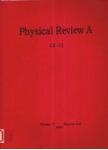版权所有:内蒙古大学图书馆 技术提供:维普资讯• 智图
内蒙古自治区呼和浩特市赛罕区大学西街235号 邮编: 010021

作者机构:Department of Engineering Physics/COMP Helsinki University of Technology P. O. Box 5100 FI-02015 TKK Finland Australian Research Council Centre of Excellence for Quantum Computer Technology The University of New South Wales Sydney New South Wales 2052 Australia Low Temperature Laboratory Helsinki University of Technology P. O. Box 3500 FI-02015 TKK Finland Centre for Quantum Photonics H. H. Wills Physics Laboratory & Department of Electrical and Electronic Engineering University of Bristol Merchant Venturers Building Woodland Road Bristol BS8 1UB United Kingdom
出 版 物:《Physical Review A》 (物理学评论A辑:原子、分子和光学物理学)
年 卷 期:2008年第78卷第3期
页 面:032314-032314页
核心收录:
学科分类:070207[理学-光学] 07[理学] 08[工学] 0803[工学-光学工程] 0702[理学-物理学]
基 金:Engineering and Physical Sciences Research Council EPSRC (EP/F008023/1 EP/F010524/1)
主 题:Quantum cryptography
摘 要:We present and analyze a quantum key distribution protocol based on sending entangled N-qubit states instead of single-qubit ones as in the trail-blazing scheme by Bennett and Brassard 1984 (BB84). Since the qubits are sent and acknowledged individually, an eavesdropper is limited to accessing them one by one. In an intercept-resend attack, this fundamental restriction allows one to make the eavesdropper’s information on the transmitted key vanish if even one of the qubits is not intercepted. The implied upper bound 1∕(2N) for this information is further shown not to be the lowest, as the information can be reduced to less than 30% of that in the BB84 scheme in the case N=2. In general, the protocol is at least as secure as BB84.